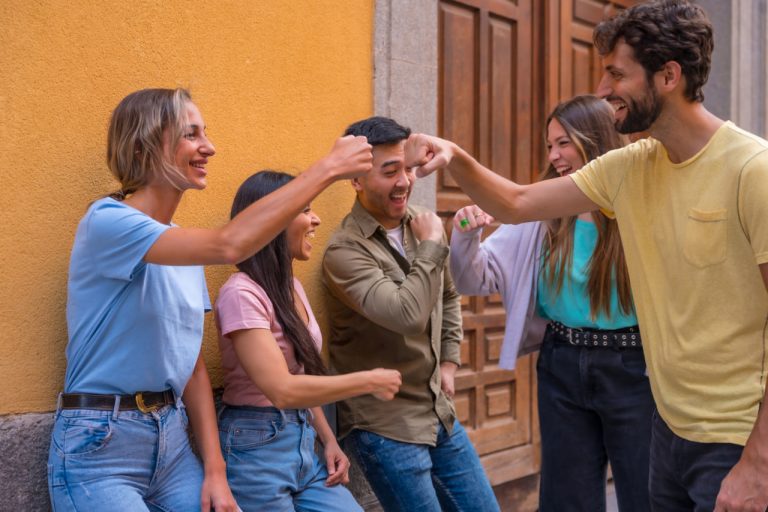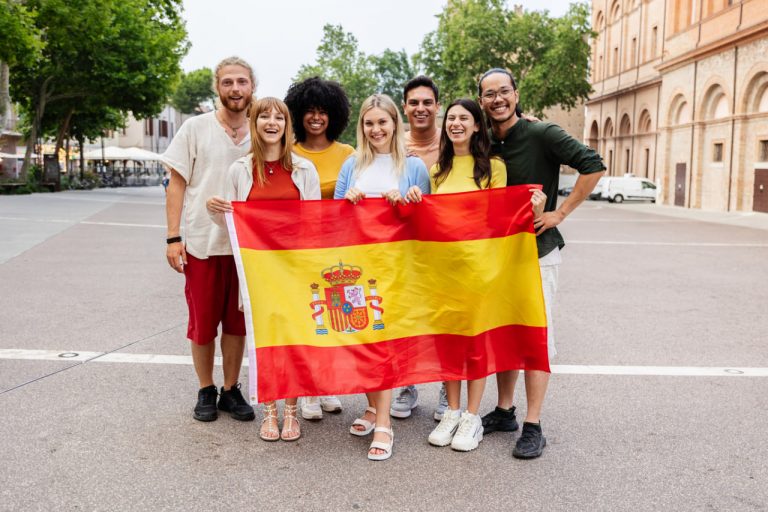Language as a Reflection of Culture
Language is not simply a set of vocabulary and rules. It is a mirror of the society that speaks it. The way we talk, the idioms we use, and even the rhythm of our speech are deeply connected to our cultural habits and values. In Spanish-speaking countries, this connection is especially visible. Understanding culture not only helps you speak more naturally but also deepens your respect for the people and places where the language lives.
Family and Formality
In many Spanish-speaking cultures, the family plays a central role, and this influence is clearly seen in the language. For instance, there are different ways to say “you,” depending on your relationship with the person. “Tú” is used for friends and people your age or younger, while “usted” shows respect and formality, especially toward elders or authority figures. This distinction is not just grammatical — it reflects the importance of hierarchy and politeness.
In Latin America, particularly in countries like Colombia and Mexico, formality in speech is often emphasized in professional and social interactions. The way someone speaks to their teacher, doctor, or boss will likely differ significantly from how they talk to a friend or sibling. Learning these nuances is essential if you want to sound not only fluent but also culturally aware.
Celebrations and Community
Festivals and public holidays offer another window into how culture shapes language. Each country has its own set of celebrations that are deeply rooted in history and tradition. In Spain, holidays like “Semana Santa” (Holy Week) and “La Feria de Abril” (April Fair) are massive cultural events. In Mexico, “Día de los Muertos” (Day of the Dead) blends pre-Hispanic and Catholic customs in a way that’s uniquely Mexican.
These events are filled with expressions, chants, songs, and rituals that have been passed down for generations. Participating in or simply observing these traditions gives language learners new vocabulary and a greater understanding of what words mean in context. For example, the word “ofrenda” doesn’t just translate to “offering” — in Mexican culture, it refers to a sacred, decorated altar full of memories, photographs, and food for the spirits of loved ones.
Food, Expressions, and Everyday Talk
Food is not just sustenance; it’s an integral part of cultural identity. In Spanish-speaking regions, food-related expressions are woven into everyday conversations. Phrases like “estar como un queso” (literally “to be like cheese,” meaning “to be very attractive”) or “dar calabazas” (to give pumpkins — to reject someone romantically) are common in casual talk.
The importance of mealtime is also reflected in language. In Spain, for instance, it’s common to use “sobremesa,” a word for the time spent talking at the table after a meal — a concept that doesn’t even exist in many other languages. Understanding these culturally rich terms gives you more than vocabulary; it offers insight into how people relate to each other and how they prioritize connection, tradition, and shared experience.
Music, Dance, and Rhythm
The vibrant musical traditions of the Spanish-speaking world also shape the way the language sounds and feels. The rhythm of flamenco in Spain or salsa in the Caribbean is echoed in local accents and expressions. In some regions, people speak more quickly, with energetic intonations, while in others, the tone is slower and more deliberate. These musical qualities influence how Spanish is spoken and heard.
Lyrics in Spanish music often include poetic language, slang, and references to cultural events. Singing along to traditional or modern songs helps learners internalize grammar, improve pronunciation, and feel the emotional depth of the language. Songs are cultural vessels — they preserve stories, beliefs, and humor that would otherwise be hard to access through textbooks alone.
Regional Identity and Local Expressions
Each Spanish-speaking country — and often each region within those countries — has its own identity. This is reflected in slang, accents, and preferred vocabulary. Argentinians use “vos” instead of “tú” and say “che” to get someone’s attention. Mexicans often end sentences with “¿verdad?” to seek agreement. In Chile, the word “pololo” means boyfriend, which is completely unfamiliar in other countries.
Understanding regional differences prevents miscommunication and shows a genuine respect for the speaker’s background. It also allows learners to choose how they want to sound — whether they lean toward European Spanish or prefer Latin American variations. It’s like choosing a dialect that fits your voice and your purpose for learning.
Learning Language Through Culture
To truly speak a language is to live part of its culture. Grammar drills and vocabulary lists may teach structure, but it’s culture that breathes life into the words. Watching Spanish films, listening to native speakers, joining in holiday traditions, and being curious about the “why” behind each phrase enriches your learning far beyond the classroom.



